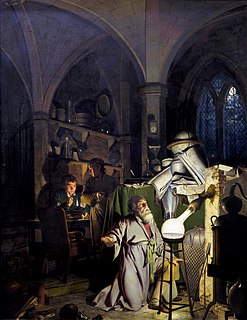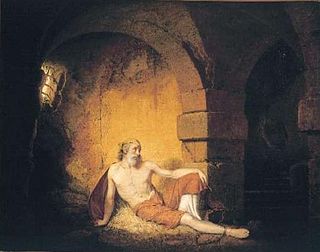Matthew Turner (died 1788), a Liverpool physician, is considered (for example by Berman, 1990) to be the author or co-author of the 1782 pamphlet, Answer to Dr. Priestley's Letters to a Philosophical Unbeliever, the first published work of avowed atheism in Britain. [1] Turner was also a pioneer in the use of ether for medical purposes, and wrote a pamphlet on the subject. In a footnote, Turner was the man who introduced Josiah Wedgwood to Thomas Bentley in Liverpool, a friendship which led to the formation of the company that produced the famous pottery.

Liverpool is a city and metropolitan borough in North West England, with an estimated population of 491,500. Its metropolitan area is the fifth-largest in the UK, with a population of 2.24 million in 2011. The local authority is Liverpool City Council, the most populous local government district in the metropolitan county of Merseyside and the largest in the Liverpool City Region.
Atheism is, in the broadest sense, the absence of belief in the existence of deities. Less broadly, atheism is the rejection of belief that any deities exist. In an even narrower sense, atheism is specifically the position that there are no deities. Atheism is contrasted with theism, which, in its most general form, is the belief that at least one deity exists.

Diethyl ether, or simply ether, is an organic compound in the ether class with the formula (C
2H
5)
2O, sometimes abbreviated as Et
2O. It is a colorless, highly volatile flammable liquid. It is commonly used as a solvent in laboratories and as a starting fluid for some engines. It was formerly used as a general anesthetic, until non-flammable drugs were developed, such as halothane. It has been used as a recreational drug to cause intoxication.
Turner was a friend of Peter Perez Burdett and his scientific knowledge was referred to Joseph Wright of Derby when he constructed his painting of The Alchemist Discovering Phosphorus in 1771 [2] which is now in Derby Museum and Art Gallery.

Peter Perez Burdett was an 18th-century cartographer, surveyor, artist, and draughtsman originally from Eastwood in Essex where he inherited a small estate and the name Perez from his maternal grandfather who was the clergyman there. He would have been notable just for his many appearances in Joseph Wright's pictures but he was also involved with numerous projects including surveying the route for one of the major projects of the industrial revolution, the Leeds and Liverpool Canal, in 1769. He has been described as "if not in the centre at least in the penumbra of the Lunar Society of Birmingham". He spent the last years of his life in Karlsruhe, avoiding debtors, but still active in German society. His German daughter married a Count.

Joseph Wright, styled Joseph Wright of Derby, was an English landscape and portrait painter. He has been acclaimed as "the first professional painter to express the spirit of the Industrial Revolution".

The Alchemist Discovering Phosphorus is a painting by Joseph Wright of Derby originally completed in 1771 then reworked in 1795. The full title of the painting is The Alchymist, in Search of the Philosopher's Stone, Discovers Phosphorus, and prays for the successful Conclusion of his operation, as was the custom of the Ancient Chymical Astrologers. It has been suggested that The Alchymist refers to the discovery of phosphorus by the Hamburg alchemist Hennig Brand in 1669. This story was often printed in popular chemical books in Wright's lifetime, and was widely known.













